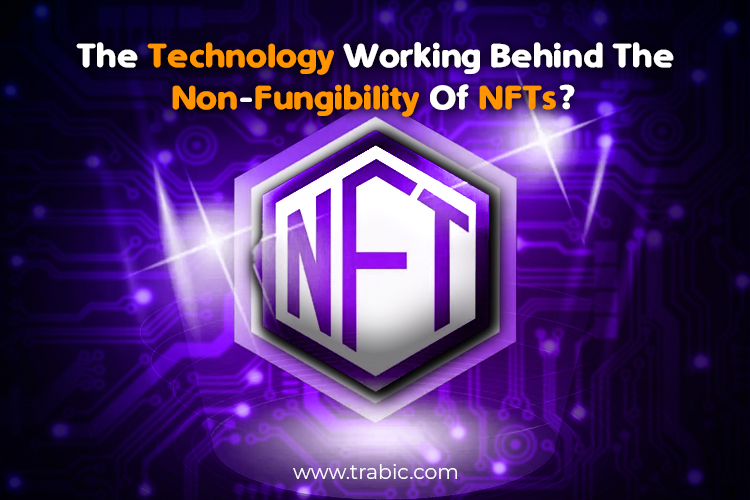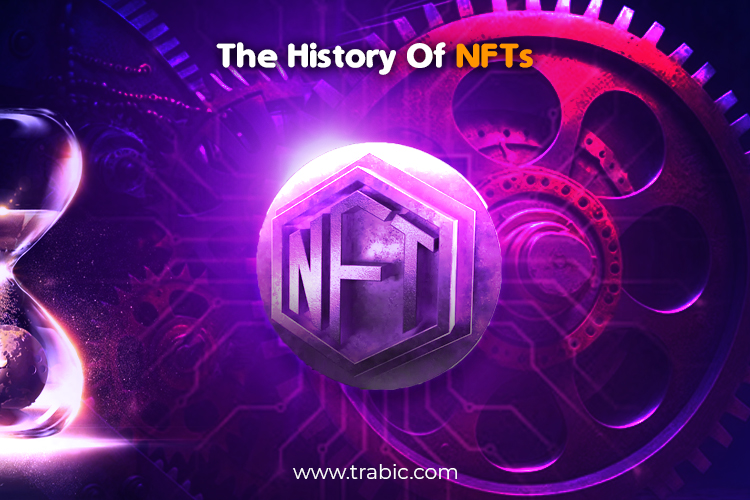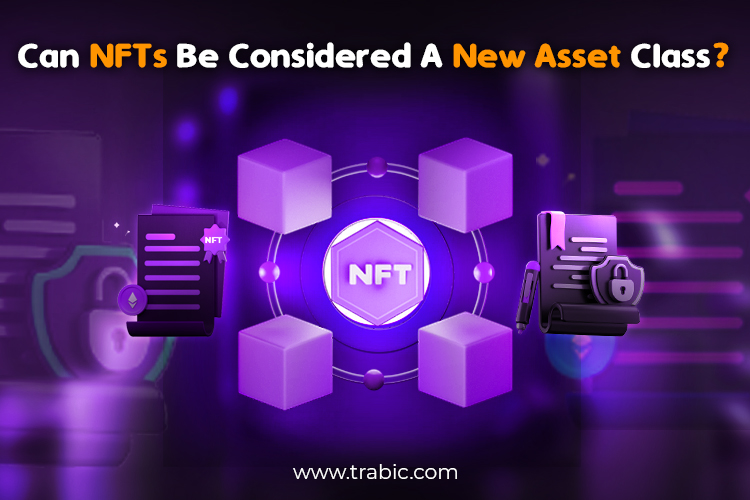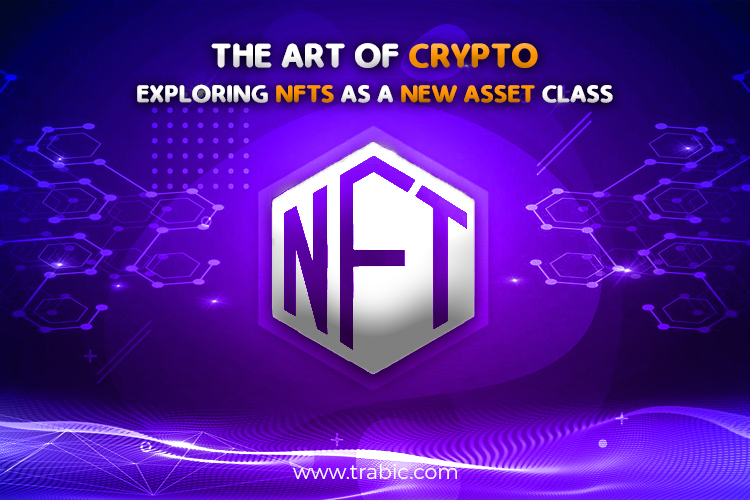The world of cryptocurrency has witnessed the emergence of a new buzzword – Non-Fungible Tokens or NFTs. These tokens have created a revolutionary shift in how people perceive digital asset value. They have opened new doors of opportunities for artists, gamers, and creators who can now monetize their digital creations in a way that was not possible before. But what is the technology working behind the non-fungibility of NFTs?
Before diving into the technology, let’s first understand what non-fungibility means. Fungibility is the property of an asset that can be easily exchanged for another asset of the same value. For example, a $100 bill can be easily exchanged for another $100, which is the same value. On the other hand, non-fungibility refers to the uniqueness of an asset that cannot be exchanged for something else of the same value. Each non-fungible asset is unique and has its distinct value.
NFTs are non-fungible tokens that are created and stored on a blockchain. Blockchain technology provides a secure and transparent way to create and store these tokens. Each NFT has a unique identifier stored on the blockchain, making it impossible to replicate or duplicate. This unique identifier is called a smart contract, a self-executing contract with the terms of the agreement directly written into lines of code.
The technology that makes NFTs non-fungible is the ERC-721 standard. ERC-721 is a set of rules that governs how non-fungible tokens should be created and stored on the Ethereum blockchain. ERC-721 is an improvement over the ERC-20 standard, which governs the creation and storage of fungible tokens.
ERC-721 allows for the creation of unique non-fungible tokens with distinct values. This is achieved by creating a new token contract for each NFT. Each contract has a unique identifier stored on the blockchain, making it impossible to duplicate or replicate. This unique identifier is what makes each NFT non-fungible.
In addition to the ERC-721 standard, other technologies contribute to the non-fungibility of NFTs. One such technology is IPFS (InterPlanetary File System). IPFS is a protocol that allows for the decentralized storage and retrieval of files. This technology is used to store digital assets that are linked to NFTs.
Another technology that contributes to the non-fungibility of NFTs is the use of metadata. Metadata is data that provides information about other data. In the case of NFTs, metadata is used to provide information about the digital asset that is linked to the token. This metadata can include information about the artist, the creation date, and the original file format, among other things.
In conclusion, the technology working behind the non-fungibility of NFTs is a combination of different protocols and standards. The ERC-721 standard, IPFS, and metadata are all used to create and store unique non-fungible tokens. NFTs have created a new paradigm shift in the digital world, where creators can now monetize their digital creations in a previously impossible way. The technology behind NFTs has paved the way for a new era of digital ownership and has the potential to revolutionize the way people perceive the value of digital assets.
What Is The Technology Working Behind The Non-Fungibility Of NFTs?

Non-fungible tokens (NFTs) use blockchain technology to create unique and verifiable digital assets that cannot be duplicated or replicated. Specifically, NFTs are built on top of blockchain platforms such as Ethereum, which allow for the creation and management of digital assets through smart contracts.
At a basic level, NFTs are created by minting a unique token on the blockchain that represents a specific digital asset. This token contains metadata that describes the asset, such as its name, description, and image, as well as a unique identifier that distinguishes it from other tokens on the blockchain. One key technology that enables the non-fungibility of NFTs is using cryptographic hashing functions. These functions generate a unique digital fingerprint, or hash, for each asset stored on the blockchain.
This hash is a unique identifier for the asset and ensures it cannot be duplicated or replicated. In addition to cryptographic hashing functions, NFTs also use digital signatures to verify the ownership and authenticity of the asset. Each NFT contains a digital signature associated with the owner’s wallet address, which allows for the easy transfer and tracking of asset ownership on the blockchain.
Overall, the technology behind the non-fungibility of NFTs is based on blockchain technology, cryptographic hashing functions, and digital signatures. These technologies work together to create unique and verifiable digital assets that cannot be duplicated or replicated, enabling a new and exciting ecosystem for digital ownership and trade.
The History Of NFTs

NFTs have surely emerged as a new and exciting way to represent and trade unique digital assets on the blockchain. The narrative of NFTs can be sketched back to the early days of blockchain technology and the development of early blockchain-based platforms such as Bitcoin and Ethereum.
The first mention of NFTs can be traced back to the launch of the Colored Coins project in 2012, which aimed to create a way to represent digital assets on the Bitcoin blockchain. While this project never gained widespread adoption, it laid the groundwork for developing new blockchain-based platforms and technologies.
In 2017, the Ethereum blockchain introduced the ERC-721 standard, which enabled the creation and trade of unique digital assets on the blockchain. The first NFT project to gain significant attention was CryptoKitties, a game that allowed users to collect and breed unique digital cats on the Ethereum blockchain.
CryptoKitties quickly became popular, and at one point, it accounted for nearly 25% of all transactions on the Ethereum blockchain. Since the launch of CryptoKitties, the NFT ecosystem has continued to grow and evolve.
In 2018, the NBA partnered with Dapper Labs to launch NBA Top Shot, a blockchain-based platform that allows users to collect and trade unique digital basketball moments. NBA Top Shot quickly gained popularity and has become one of the most successful NFT projects. In addition to NBA Top Shot, there have been many other successful NFT projects in recent years. These include art marketplaces like SuperRare and Nifty Gateway, gaming platforms like Axie Infinity and The Sandbox, and even virtual real estate projects like Decentraland.
Overall, the history of NFTs is relatively short but has been marked by rapid growth and innovation. NFTs have appeared as a unique and compelling way to represent and trade unique digital assets on the blockchain. They could revolutionize how we think about digital ownership and value in the future.
Can NFTs Be Considered A New Asset Class?
NFTs, or non-fungible tokens, have been described as a new asset class because they represent a unique digital asset that can be bought, sold, and traded on blockchain-based platforms. NFTs have the potential capability to create new opportunities for creators, investors, and collectors in a wide range of industries, including art, music, gaming, sports, and more.
One of the main advantages of NFTs as a new asset class is their ability to represent unique and authentic digital content. Unlike classic digital assets, which can be replicated and shared easily, NFTs are designed to be one-of-a-kind, each representing a unique item or piece of content. This means that NFTs can provide a new level of scarcity and exclusivity to digital assets, increasing their perceived value and potential for investment.
Another advantage of NFTs as a new asset class is their ability to be traded globally, 24/7, on blockchain-based platforms. This provides a new level of accessibility and liquidity for digital assets, allowing buyers and sellers worldwide to participate quickly.
Additionally, blockchain technology provides a transparent and secure way to verify the ownership and provenance of NFTs, further increasing their value and potential for investment. NFTs have already been used to sell unique digital assets, including virtual real estate, digital artwork, music, videos, and tweets.

Some NFTs have been marketed for millions of dollars, highlighting the potential for this new asset class to create significant value for creators and investors. However, as with any new asset class, there are risks and challenges associated with NFTs. For example, the market for NFTs is still relatively new and volatile, with prices fluctuating rapidly and the potential for fraud or scams.
Additionally, there still needs to be more regulation and standardization around NFTs, which can make it difficult for buyers and sellers to navigate the market. NFTs represent a new and exciting opportunity to explore the potential of digital ownership and value and have the potential to create new opportunities and challenges for creators, investors, and collectors in the years to come.
Purchasing The NFTs
Purchasing NFTs requires some familiarity with cryptocurrency and blockchain technology, but the process is relatively straightforward once you have set up your digital wallet and funded it with cryptocurrency. To purchase NFTs, you will typically need to follow these steps:
- Choose a marketplace: There are several NFT marketplaces to choose from, including OpenSea, Rarible, SuperRare, and Nifty Gateway, among others. Each marketplace has its own NFTs, fees, and payment options.
- Set up a digital wallet: Before purchasing an NFT, you must set up a digital wallet that supports the cryptocurrency the marketplace uses. For example, if the marketplace uses Ethereum as its currency, you must set up an Ethereum wallet. There are many wallets, including MetaMask, MyEtherWallet, and Coinbase Wallet.
- Purchase cryptocurrency: If you do not already have cryptocurrency, you must purchase some using a cryptocurrency exchange. Coinbase, Binance, and Gemini are popular exchanges where you can purchase cryptocurrencies such as Ethereum, Bitcoin, or other digital assets using fiat currency.
- Fund your digital wallet: Transfer it to your digital wallet once you have purchased cryptocurrency. This is generally done by transmitting the cryptocurrency from the exchange to your wallet address.
- Browse and purchase NFTs: Once you have funded your wallet, you can browse the marketplace for NFTs you are interested in. Each NFT will have a unique address that you can use to purchase it. When you find an NFT you want to purchase, you can typically use your digital wallet to pay for it using cryptocurrency.
- Transfer the NFT to your wallet: After you have purchased the NFT, it will be transferred to your digital wallet. You can view, hold, and trade the NFT using your wallet.
The purchasing process of NFTs can vary depending on the marketplace and the type of NFT you purchase. Some NFTs may require additional verification or registration, and fees and transaction times can vary depending on the cryptocurrency used and the network congestion.
Safety Parameters Of NFTs?
NFTs are generally considered safe, but there are some potential risks that buyers and sellers should be aware of. One of the critical benefits of NFTs is that they are built on blockchain technology, designed to be secure and transparent. This means that once an NFT has been created and recorded on the blockchain, it cannot be altered or deleted, and anyone can verify its ownership and provenance. However, there are some risks associated with NFTs that buyers and sellers should be aware of. These include:
1. Scams and fraud:
As with any emerging market, there is a risk of fraud in the NFT market. Buyers and sellers should be cautious when dealing with unknown or unverified parties and use reputable marketplaces with solid security measures.
2. Market volatility:
The value of NFTs can be highly volatile and fluctuate significantly based on market demand, trends, and other factors. This means buyers and sellers should be prepared for potential price swings and only invest what they can afford to lose.
3. Technical glitches:
While blockchain technology is generally secure and reliable, there is always a risk of technical glitches or errors that could affect the functionality or validity of NFTs. Buyers and sellers should know these risks and only use reputable marketplaces and crypto platforms with strong technical support.
4. Environmental impact:
Some critics of NFTs have raised concerns about the environmental impact of blockchain technology, which requires significant amounts of energy to maintain. Buyers and sellers should be aware of these concerns and consider the environmental impact of their NFT purchases and sales.
In summary, while NFTs are generally considered safe and secure, there are some potential risks and challenges that buyers and sellers should be aware of. By using reputable marketplaces, conducting due diligence, and being aware of potential risks, buyers and sellers can confidently participate in the NFT market.
NFTs and Practical Examples
Non-fungible tokens, or NFTs, are digital assets that define a unique item or piece of content on a blockchain-based platform, such as artwork, music, videos, or virtual real estate. Unlike traditional cryptocurrencies like Bitcoin, which are fungible and interchangeable, NFTs are unique and cannot be exchanged for other tokens on a one-to-one basis.
Each NFT includes a unique code that affirms its authenticity, ownership, and history of transactions on the blockchain. This code is stored on a decentralized network of computers, making it nearly inconceivable to tamper with or forge. Because of this, NFTs are often seen as a safe and transparent method to prove ownership and provenance of digital assets. NFTs are created using smart contracts, which are self-executing computer programs that automatically enforce the terms and conditions of a transaction.
Smart contracts allow NFT creators to set rules around the ownership, transfer, and use of their digital assets, including royalty payments or restrictions on copying or sharing. NFTs have attained popularity in recent years as a mode to represent and trade unique digital assets. They allow creators to monetize their digital content and retain ownership and control over its use. They also provide collectors with a new and exciting way to invest in and own digital art, music, and other content.
Overall, NFTs represent a new and innovative way to think about digital ownership and value and have the prospect of revolutionizing how we create a share and digital trade assets. Many examples of NFTs, or non-fungible tokens, have been created and traded on blockchain-based platforms. Here are a few examples:
- CryptoKitties: One of the earliest and most popular NFT projects, CryptoKitties allows users to collect and breed unique digital cats on the Ethereum blockchain.
- NBA Top Shot: A blockchain-based platform launched by the NBA and Dapper Labs, NBA Top Shot allows users to collect and trade unique digital basketball moments.
- CryptoPunks: A series of 10,000 unique 8-bit-style characters, each with distinct traits, which can be bought and sold on the Ethereum blockchain.
- Beeple’s “The First 5000 Days”: An NFT representing a digital artwork created by digital artist Mike Winkelmann, which sold for a record-breaking $69 million at a Christie’s auction in 2021.
- Decentraland: A virtual world created on the Ethereum blockchain where users can purchase and sell virtual real estate and create and trade unique digital assets.
- Axie Infinity: A blockchain-based game that allows users to collect, breed, and battle unique digital creatures called Axies, which can be traded on the Ethereum blockchain.
- Rarible: A marketplace for purchasing and marketing NFTs where users can create and sell their unique digital assets.
These are just a few instances of the numerous NFT projects and platforms that have emerged in recent years, showcasing the diverse range of use cases for this new and exciting technology.
